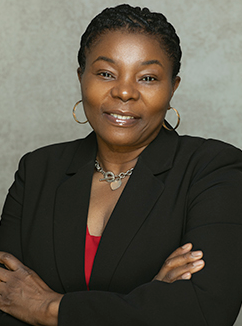Illustrations by Dan Matutina
If nursing were a body, its brain would be leadership, flexibility, and creativity. Its heart would be compassion, calm, and perseverance. Its eyes and its hands would be skill and experience.
When you look at a Hopkins Nurse, you might see a first responder, a researcher, an advocate for change, a breaker of myths, a policy influencer, an enemy of complacency. What you might miss is a reflection of yourself. For just as all bodies are unique, the nursing profession offers nearly uncountable “fits” for a person from any walk of life, gender, background, or ZIP code.
If you are unsure what you’d “look” like in nursing, try our new web feature, “The Anatomy of a Hopkins Nurse” (nursing.jhu.edu/anatomy). Meet folks like you, here and at the website. Take our online poll to find out what form of nursing fits your body, mind, and spirit. (Or get a warm reminder of why you’re here already.) Wherever you fit, the journey can begin—or continue—at the Johns Hopkins School of Nursing.


Nurse Entrepreneur: Beatrice Marseille
Beatrice Marseille came to the U.S. from Haiti and earned a degree in nuclear medicine in 1992. “But I always wanted to be a nurse,” she says. Today, she’s a DNP-prepared, hospitalist nurse practitioner, a nurse entrepreneur with her organizations Maple Adult Care and Maple Community, and a nurse leader with her nonprofit Vision for Haiti. “We go to rural Haiti, where there is no running water, no electricity, and just a small clinic,” Beatrice says. In the United States or abroad, the bottom line is community care: one-on-one direct patient care, connecting patients to social services, coordinating care so those in remote locations are not left behind. “Being a nurse, you learn how to do a lot of things,” she says. “You have the ability to make a difference in your community.”

Seeing All Sides: Jenna Mermer
Jenna Mermer has experienced a quick trajectory in the two years since she graduated from the MSN (Entry Into Nursing) program. “I didn’t expect to become a supervisor so quickly, but I’m happy to serve where I’m useful and there’s a need,” she says. She’s 100 percent public health nurse; her duties are split between seeing patients and managing/building out programs. “A hallmark of public health nurses is that we are asked to do many things beyond our job description.” This year, that meant creating a COVID-19 information line at a clinic of the Howard County Health Department. “We took a handful of nurses and developed frequently asked questions, protocols, a call tracking system, and more, from scratch, in a day.” It’s fast-paced work, but exactly what she wanted. “The one-on-one is why I became a nurse, but I love the high-level program management that lets me design things that will work for people,” Mermer says. “And I still get to build a personal connection with my patients.”

Reproducing Results: Ashley Gresh
Nurse midwife and PhD student Ashley Gresh is driven to provide new mothers and babies—everywhere in the world—with compassionate care through quality research.
Going strictly by the numbers will tell you she has touched the lives of many women and children in the United States, India, and Malawi. Now a mother herself, Gresh breaks her nursing anatomy down like this:
• 50 percent PhD research. That’s adapting and implementing group postpartum and well-child care in Malawi, with a focus on maternal health as well as child health.
• 25 percent work as a Global Women’s Health Fellow, most recently in India.
• 10 percent public health nursing clinical instructor.
• 10 percent lead intern for the World Health Organization’s Global Alliance for Nursing and Midwifery.
• 5 percent research assistant for perinatal health in Malawi.
Where Do You Fit?
Learn more about Beatrice Marseille, Ashley Gresh, and Jenna Mermer’s nursing anatomies, build your own, or find out where you fit into the profession at nursing.jhu.edu/anatomy.

